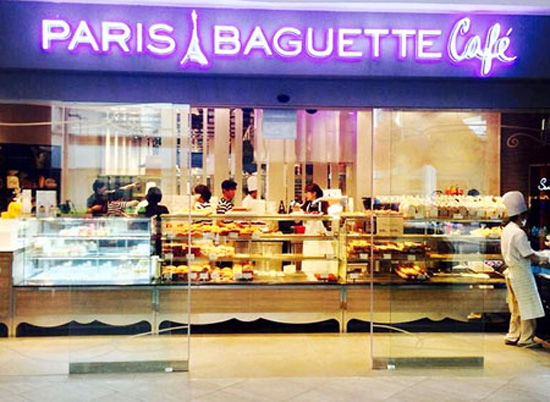- California Assembly OKs highest minimum wage in nation
- S. Korea unveils first graphic cigarette warnings
- US joins with South Korea, Japan in bid to deter North Korea
- LPGA golfer Chun In-gee finally back in action
- S. Korea won’t be top seed in final World Cup qualification round
- US men’s soccer misses 2nd straight Olympics
- US back on track in qualifying with 4-0 win over Guatemala
- High-intensity workout injuries spawn cottage industry
- CDC expands range of Zika mosquitoes into parts of Northeast
- Who knew? ‘The Walking Dead’ is helping families connect
Paris Baguette grows into global brand
By Chung Hyun-chae
The nation’s bakery giant, Paris Baguette, has been faring well in the global market, especially in China, the U.S., Vietnam and Singapore, thanks to its localization strategy.
“If the major strategy during the past 10 years was pursuing high quality, now the key is localization,” said a company spokesman.
After cementing its status as a premium brand by capturing upper-class customers in each country, Paris Baguette, an affiliate of the SPC Group, pursues localization, along with customer-friendly, experience-based marketing promotions, such as holding cake-making classes.
To localize its brand, it plans to ensure products are up to 20 percent local, that is, tailored to local consumers’ taste.
Paris Baguette opened its 100th store in China last year, indicating the significant growth of its franchise business as a major player in the country’s bakery industry.
It is one of the few foreign bakery brand success stories in the Chinese market, which is difficult to penetrate because of the complex preferences of Chinese consumers. Even renowned French bakeries Paul and Fauchon closed their business after a few years in the country.
Paris Baguette has been sending employees to China from the mid-90s to conduct market research and formulate an effective entry strategy.
“The Chinese, who love greasy food, prefer chopped meat in their sandwiches. So we created yuksong bread, which is filled with minced meat that has been gaining popularity among Chinese customers,” said the spokesman.
In 2005 it advanced to the U.S., where consumers were not familiar with the self-serve system to which Korean customers are accustomed. American customers usually stand in line and place their orders directly to the clerk at the counter. Thus, Paris Baguette took this and American customers’ distinct tastes into its localization strategy.
Paris Baguette also wanted to expand in Southeast Asia and chose to enter Vietnam first.
“We expected Vietnam to be the hub in Southeast Asia, especially because bread is a staple there, a legacy of the French colonial period,” said the spokesman.
The brand next entered Singapore, which has high standards of living and an advanced bakery culture. The bakery’s high-quality products and services fit the market and are on par with local premium bakery, Paris Croissant.
Now Paris Baguette, plans to advance into Indonesia and other countries in the region to ultimately form an “SPC global belt.”
It has set the goal of 2 trillion won in overseas sales and 3,000 stores in 60 countries by 2020.
















